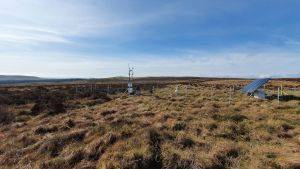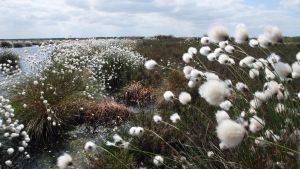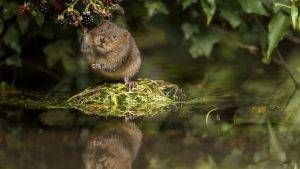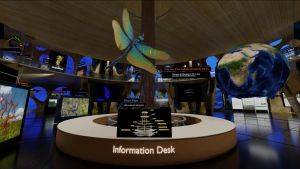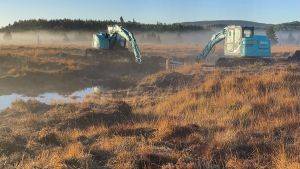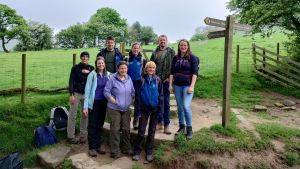Black Law Windfarm
Introduction
ScottishPower Renewables is a leading developer of windfarms in the UK with over 1000MW of installed capacity. Acknowledging the sensitivities of development in upland locations, ScottishPower Renewables has made a commitment to restore peatland habitats covering over 8000 ha across its windfarm sites.
Description
In many areas of the UK, large expanses of blanket bog have been drained and replaced with trees for commercial forestry. This afforestation has resulted in the loss of large areas of peatland and, as a result, a loss in the UK’s biodiversity and soil carbon storage potential. However, as there is greater recognition of the immense value of peat bog habitats there is a move towards restoring this afforested blanket bog back to its original condition.
Project Aims
Early results show the techniques used have been successful in raising water levels and within 12 months characteristic peatland plants, such as Sphagnum mosses, have started to re-colonise the trial areas. Ongoing monitoring will now serve to inform which methods are most effective in different situations and allow the development of a programme for treatment in priority order. This work will be crucial for ensuring long-term success of the bog restoration, as well as informing future projects on the best techniques for landscape-scale restoration of blanket bog from commercial forestry.
Restoration Delivered
Trials have been set up at both Black Law and Whitelee to assess which techniques will provide the best conditions for blanket bog to recover from commercial forestry. These trials involve:
- traditional ditch blocking with peat and plastic dams
- ditch in-filling with brash, stumps and peat
- brash/mulch manipulations on the bog surface
- low intervention “ground smoothing”, where the ridge/furrow pattern is flattened with a tracked vehicle
- high intervention “ground smoothing”, where the ridge/furrow pattern is mechanically re-graded using an excavator
Monitoring includes detailed measurements of erosion processes, hydrological response, water chemistry and the rate of vegetation growth. In areas where conifers are regenerating from seed, their resilience to survive the above treatments is also being monitored.
Site Activity
ScottishPower Renewables aims to restore blanket bog habitat across several of its windfarm sites, including the largest sites at Black Law and Whitelee where large expanses of blanket bog were historically drained and planted with commercial forestry. During windfarm construction the forestry was either conventionally harvested or mulched on areas of deep peat. A Habitat Management Plan was developed for both sites with the core aim to restore these areas to blanket bog habitat.
To ensure all the different stakeholder organisations have input to this peatland restoration project, a Habitat Management Group has been set up which includes representatives from Scottish Natural Heritage, the Royal Society for the Protection of Birds, Forestry Commission Scotland and various local authorities. This forum discusses the results of monitoring and shares knowledge and learning. This collaborative approach also allows close working with landowners to ensure the project objectives are realistic and deliverable without compromising existing land management practices.
Project Name: Black Law Windfarm
Organisation / Lead partner: ScottishPower Renewables
Location: North Lanarkshire, Scotland
Approximate area covered: 2200 ha
Predominately: Upland
Peat Habitats: Blanket bog
Project Type: Restoration



